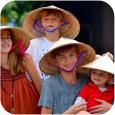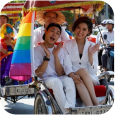Festivals in Ha Giang: A Cultural Journey Through Vietnam’s Northern Highlands
Located in the far north of Vietnam, Ha Giang is well known for its dramatic limestone mountains, winding passes, and untouched landscapes. Yet beyond its breathtaking scenery, Ha Giang is equally captivating for its rich tapestry of ethnic cultures. With over 20 ethnic communities calling the region home, the province hosts numerous traditional celebrations throughout the year. These festivals in Ha Giang are not only spiritual and cultural events but also windows into the lives, beliefs, and heritage of the local people.
Whether you are a cultural traveller, a photographer, or simply someone who loves authentic local experiences, Ha Giang’s festivals offer something truly special. Let’s explore the most iconic festivals in Ha Giang and discover what makes each one unique.
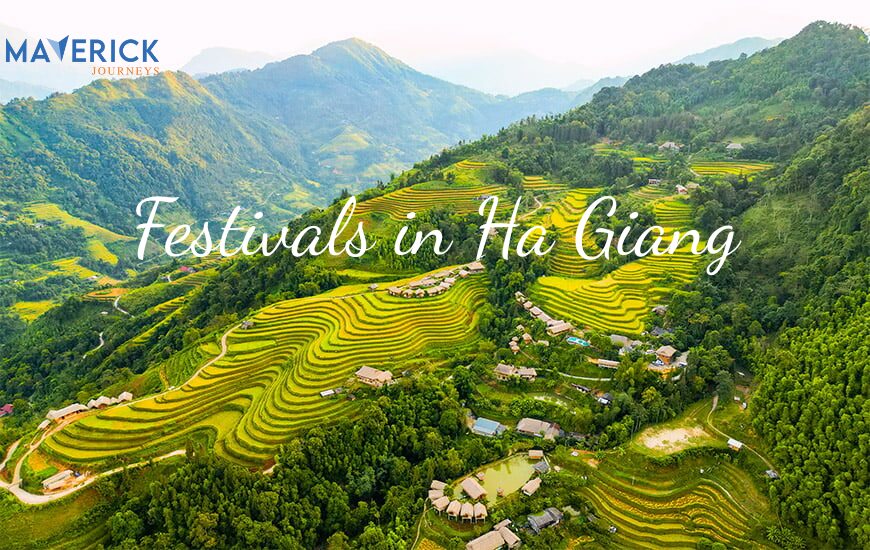
1. Buckwheat Flower Festival (Lễ hội Hoa Tam Giác Mạch)
Time: October – November
The Buckwheat Flower Festival is undeniably one of the most famous festivals in Ha Giang, attracting both domestic and international visitors. Held during the blooming season of the pinkish-purple buckwheat flowers, the festival celebrates the beauty of the Dong Van Karst Plateau and the cultural heritage of the H’Mong people.
During this period, the mountain slopes and valleys of Đồng Văn, Mèo Vạc, and Lũng Cú transform into vast fields of buckwheat blooms, creating some of the most photogenic landscapes in northern Vietnam. The festival serves as a tribute to the symbolic flower—once essential to the H’Mong diet and now a cultural icon.
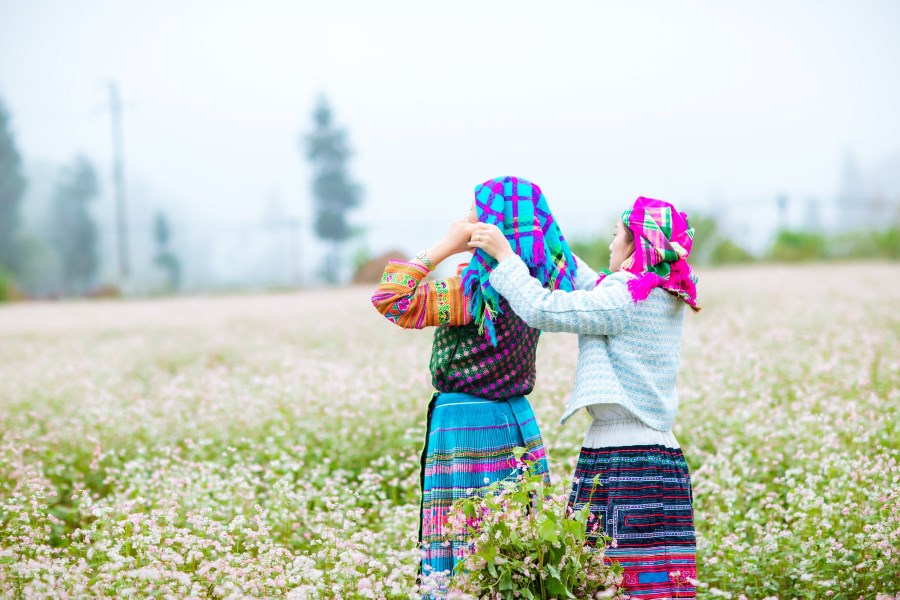
Main Activities
-
Marathons, painting contests, and photography exhibitions
-
Traditional H’Mong music and dance performances
-
Culinary booths featuring buckwheat cakes, corn wine, and local dishes
-
Cultural markets showcasing ethnic crafts and textiles
More than just a flower celebration, the festival provides deep insight into H’Mong customs, music, costumes, and village life.
2. Fire Jumping Festival (Lễ hội Nhảy Lửa)
Time: Between the 15th of the 12th lunar month and the 15th of the 1st lunar month
The Fire Jumping Festival, also known as the Fire Worship Festival, is one of the most dramatic and spiritually powerful festivals in Ha Giang. Celebrated by the Pà Thẻn ethnic group, this ritual marks the end of the harvest season and the arrival of winter.

For the Pa Thẻn, fire represents the supreme deity—symbolizing purity, protection, and good fortune. The festival begins with 5–8 hours of spiritual invocation led by a shaman. As the ceremony reaches its peak, the young men, believed to be spiritually possessed, leap barefoot into blazing fire for several minutes without being harmed.
This extraordinary act displays courage, faith, and the deep spiritual connection between humans and sacred forces.
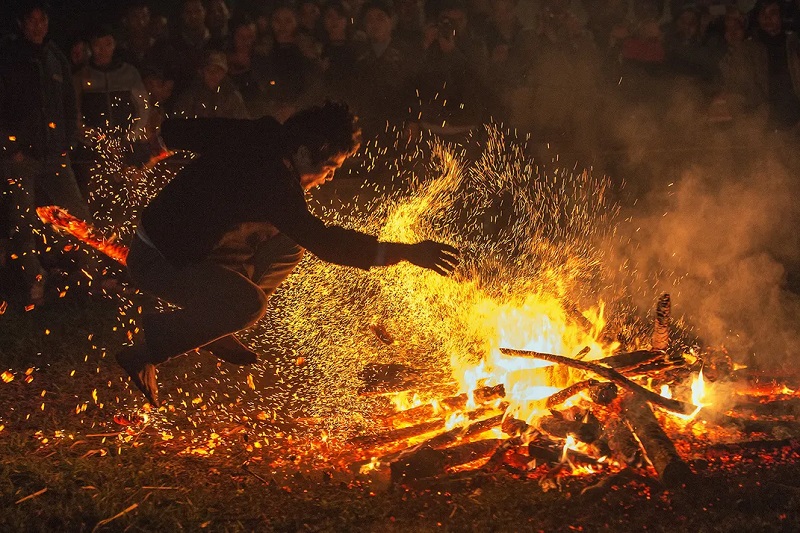
Key Highlights
-
Long invocation rituals with music and chanting
-
Offerings such as a rooster, rice, wine, incense, and paper money
-
Fire-jumping ceremony starting around 8 PM
-
A rare chance for visitors to witness an ancient spiritual tradition
3. Moon Worship Festival (Lễ hội Cúng Trăng)
Time: 14th – 15th of the 8th lunar month (Mid-Autumn Festival)
The Moon Worship Festival is a beautiful and meaningful tradition of the Tày ethnic community, especially in Bàn Loan Village of Bắc Mê District. The Tày people believe the Moon governs prosperity, peace, and harmony on earth. Thus, during the Mid-Autumn Festival, they welcome the Moon and celestial maidens in gratitude and celebration.
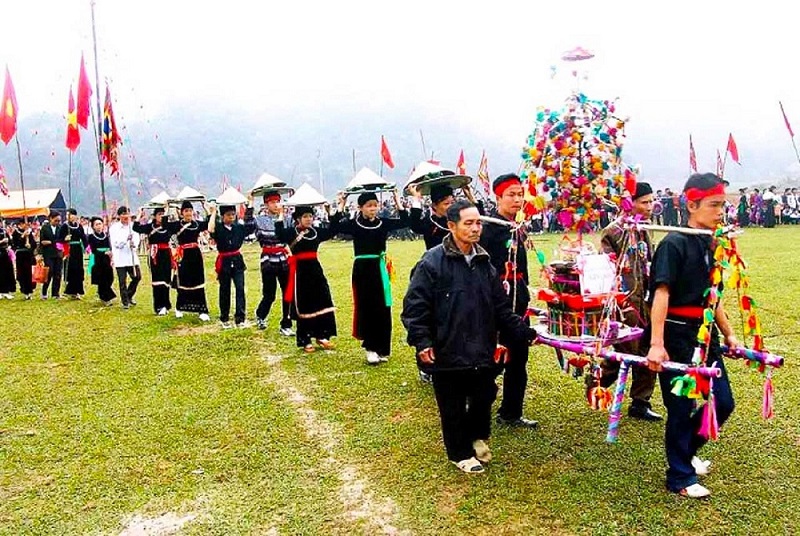
Ceremony – 14th day
The village elder performs sacred prayers to seek permission from the Land Genie. During the ritual, villagers dance around the altar until the prayers conclude.
Festival – 15th day
The following day is dedicated to joyful activities:
-
Tasting Tày traditional cuisine
-
Folk games and singing
-
Lantern processions and community gatherings
This festival beautifully combines spirituality with the warmth of communal celebration.
4. Gau Tao Festival (Lễ hội Gầu Tào)
Time: 1st – 15th day of the 1st lunar month
The Gau Tao Festival is considered the most important festival of the H’Mong people and plays a significant role among major festivals in Ha Giang. Held during the Lunar New Year period, it is dedicated to two main prayers: for children and for good health.
Purpose and Meaning
-
Praying for children: Families without children—or those wishing for a balanced gender—seek help from relatives who have both sons and daughters. Together, they erect the New Year tree (Cây nêu), symbolizing fertility and blessings.
-
Praying for health: Families with sick members ask two young men to set up the New Year tree to wish for recovery and protection.

Main Activities
-
Spinning top games
-
Archery and horse racing
-
Traditional H’Mong music, dances, and costume displays
-
Ceremonial rituals around the New Year tree
The festival is joyous, energetic, and a vivid showcase of H’Mong identity.
5.Cap Sac Ritual (Lễ Cấp Sắc)
Time: November – January (after the rice harvest)
The Cap Sac festival is a sacred initiation ceremony practiced by various Dao ethnic groups, including the Red Dao, Dao Tiền, and Dao Áo Dài. It marks the transition of boys into mature men and carries deep educational values—teaching moral integrity, responsibility, and spiritual awareness.
Before the festival, the host family prepares offerings and invites officiating priests. Participants must follow strict rules such as avoiding arguments, singing, or romantic interactions.
During the ritual, six priests conduct numerous ceremonies, accompanied by symbolic offerings like pigs, rice, and liquor.
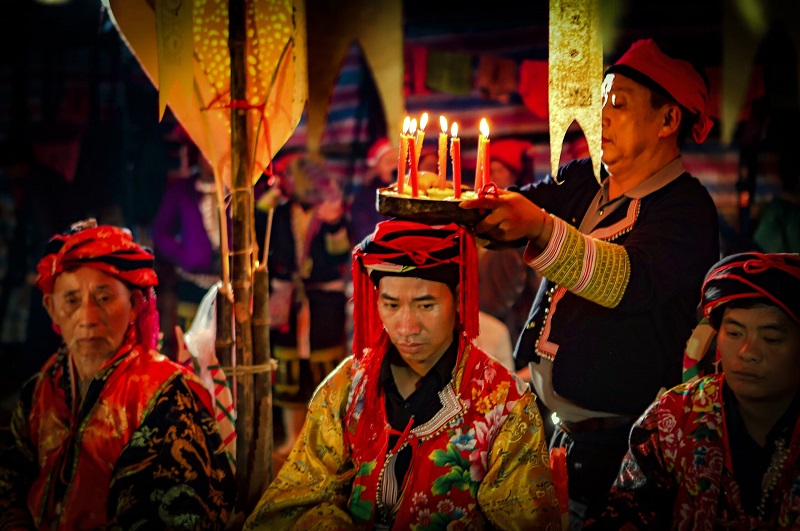
Main Activities
-
Ceremonial chanting and blessings
-
Traditional Dao cuisine
-
Cultural exchanges and storytelling
The Cap Sac ritual is one of the most spiritually significant festivals in Ha Giang, offering rare insight into Dao beliefs and community values.
Experiencing Festivals in Ha Giang: Why You Shouldn’t Miss Them
Each festival in Ha Giang reflects centuries-old traditions, spiritual beliefs, and the rich cultural diversity of the highlands. Experiencing these festivals allows travelers to:
-
Witness authentic ethnic rituals
-
Capture unique cultural performances
-
Taste traditional delicacies
-
Connect with warm and hospitable ethnic communities
-
Understand the meaningful spiritual life behind local customs
From flower fields to fire dances, festivals in Ha Giang are a cultural journey that brings the region’s heritage to life.
To continue your adventure through Vietnam’s northern highlands, check out our complete Ha Giang Loop Travel Guide for routes, maps, tips, and the best stops along the legendary loop.









